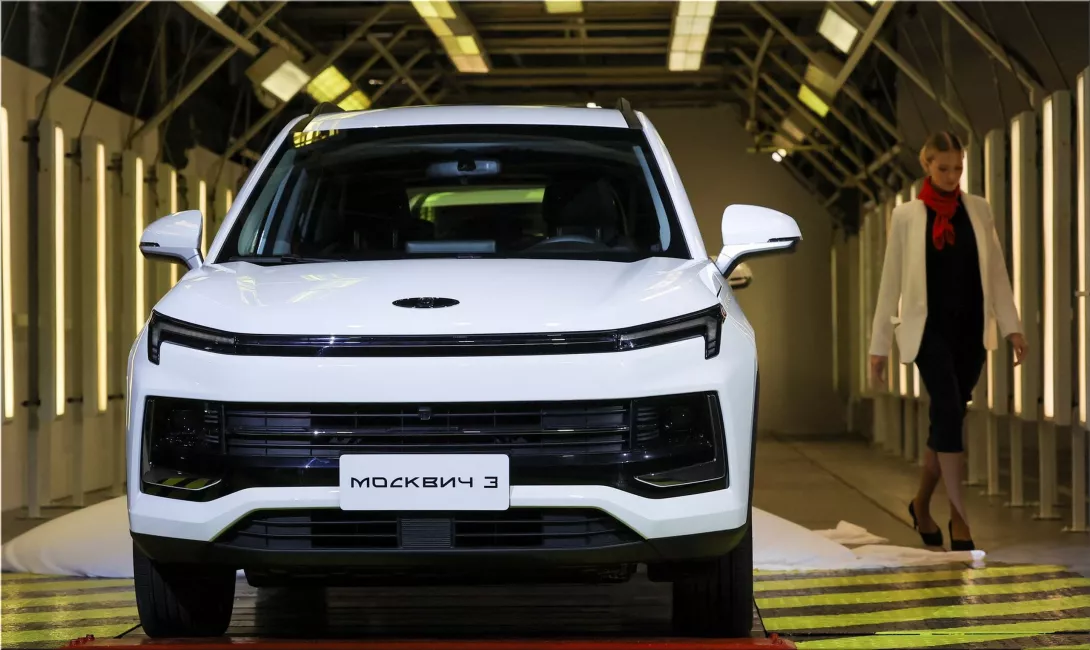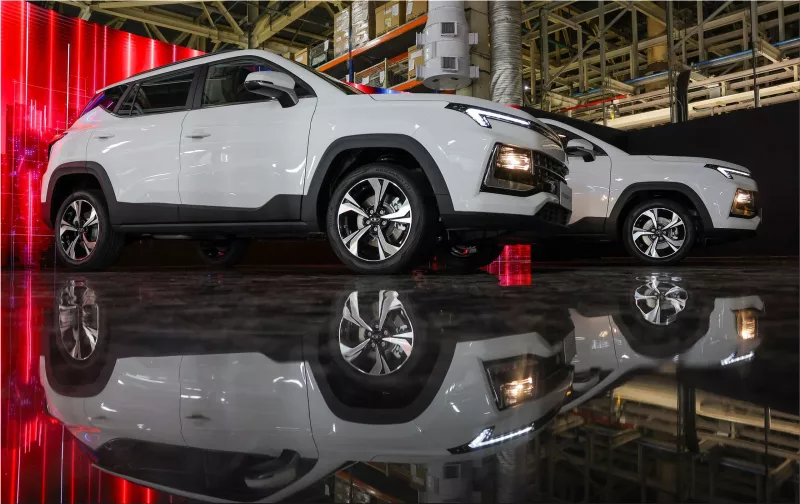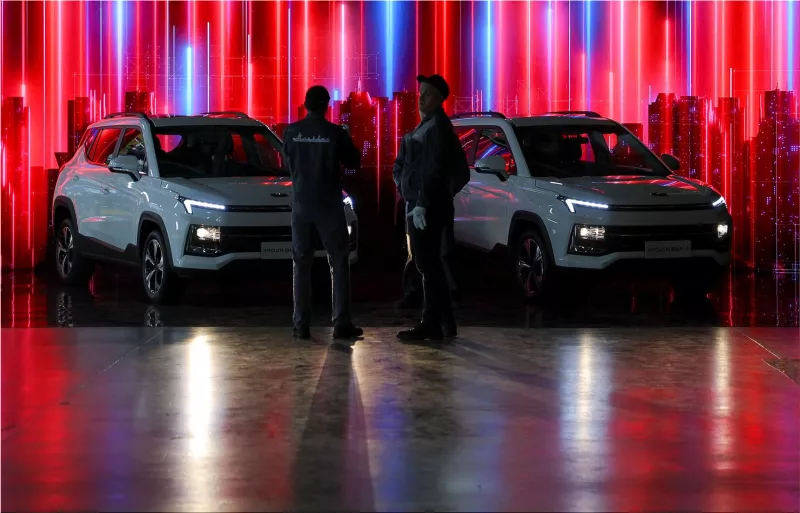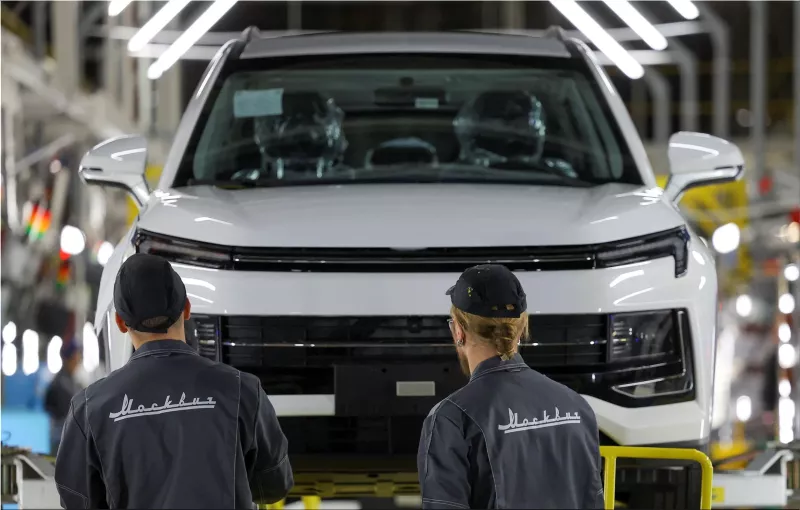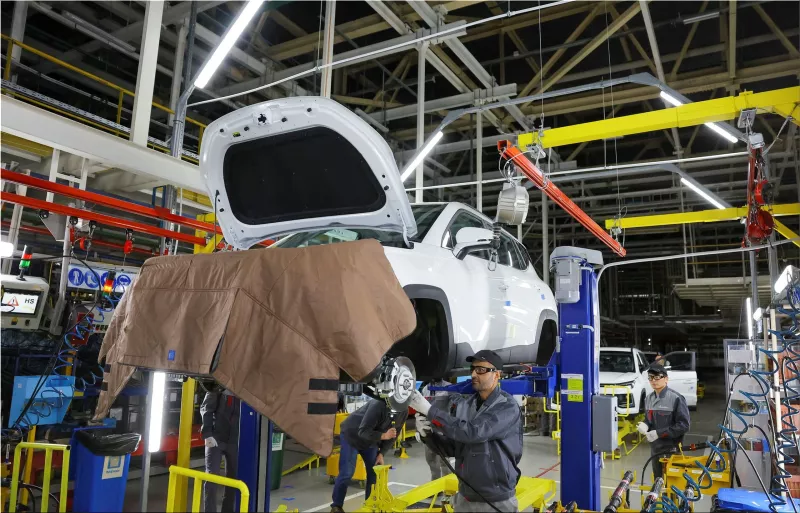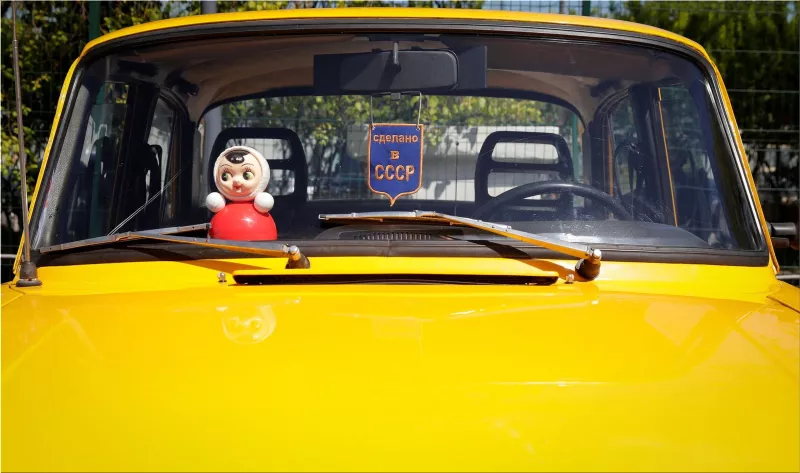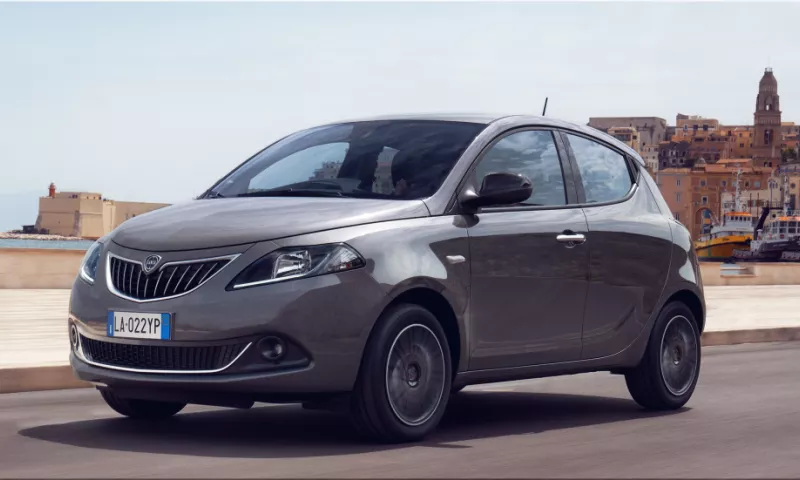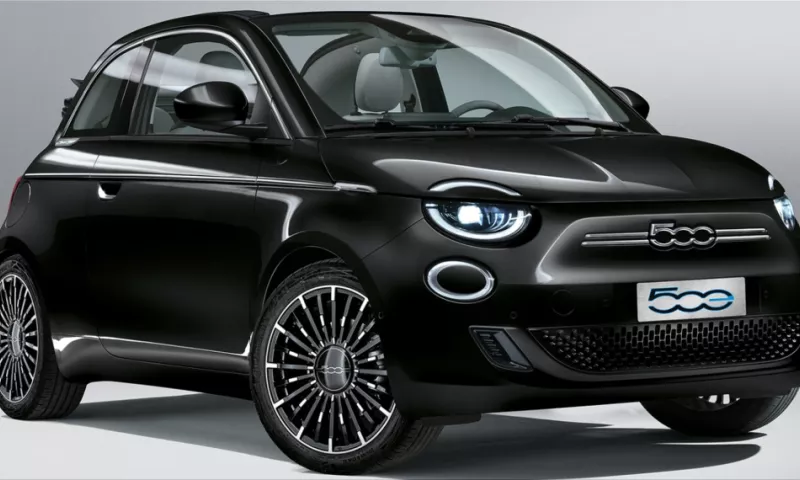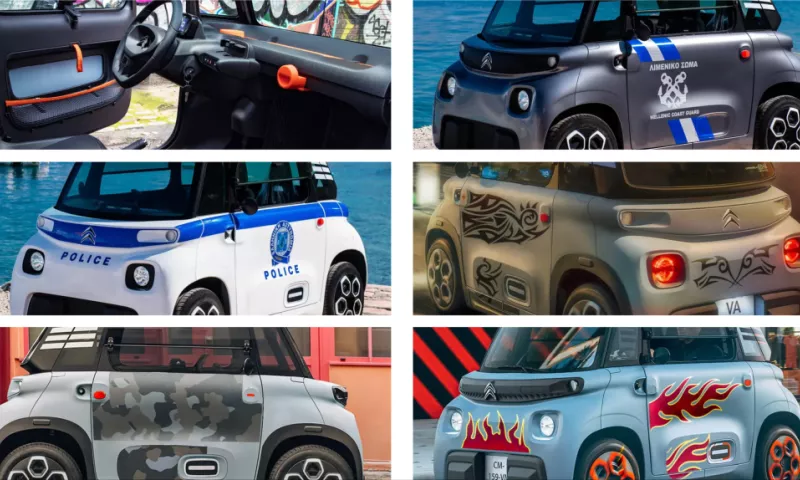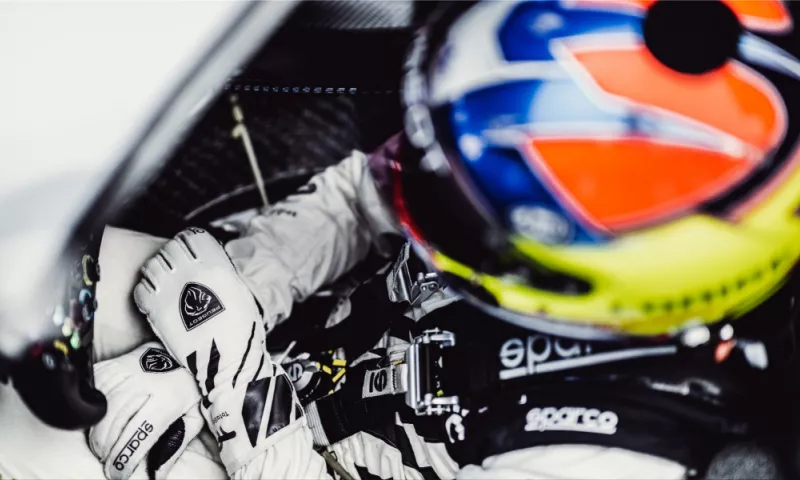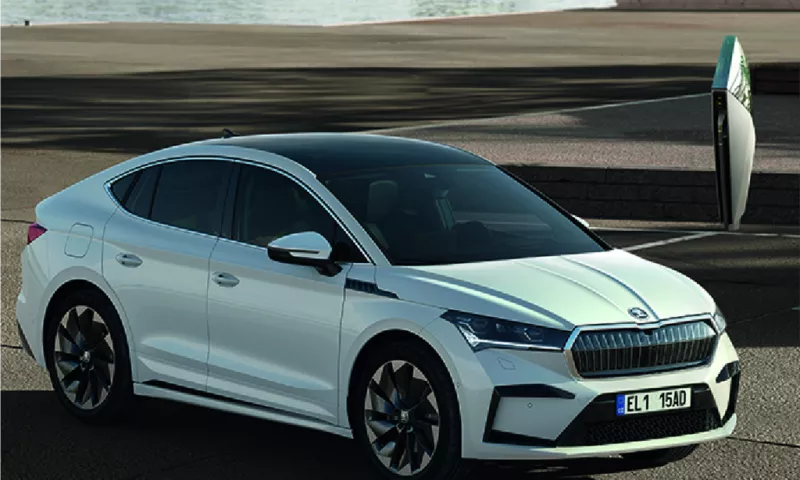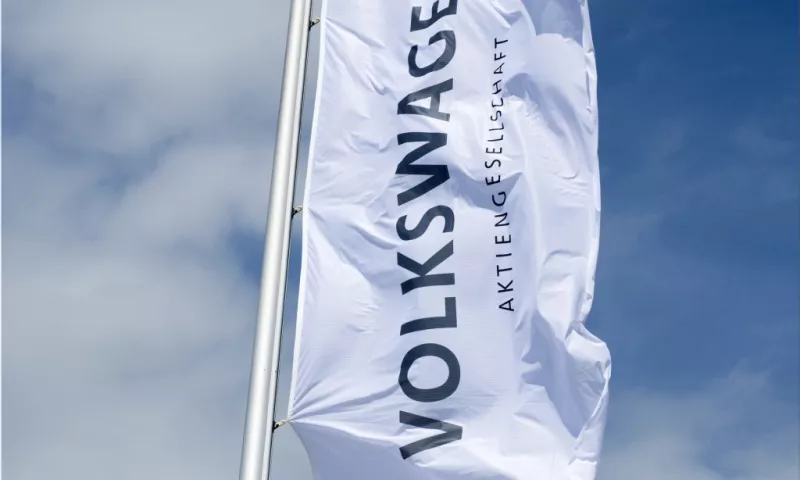Moskvich, the iconic Soviet car brand once a source of pride for Moscow and its residents, is returning after two decades of absence. A Russian company called Avtotor Holding has bought a former Renault factory in Moscow and plans to produce modern versions of the Moskvich models that were popular in the Soviet era. The first car to roll off the production line is the Moskvich 3, a petrol-powered crossover hatchback that bears little resemblance to the classic Moskvich saloons and hatchbacks of the past.
The Moskvich 3 is actually based on a Chinese design, the Sehol X4 compact crossover made by JAC, also known as the JAC JS4. Sources told Reuters that JAC's design, engineering, and platform were being used, with parts being delivered from China. However, Maxim Klyushkin, the plant's project manager, declined to confirm that JAC was Moskvich's partner. He said that Kamaz, a Russian truck maker, was an external partner and that there was another long-distance partner that he did not name.
The Moskvich 3 features a muscular-looking exterior with alloy wheels, LED slit headlights, and a large central touchscreen display. It also has an anti-lock braking system (ABS), one of the features that Russia's Avtovaz has been forced to remove from Lada models because of the Western trade sanctions imposed in response to Moscow's military campaign in Ukraine. The Moskvich 3 will be priced at around 1 million roubles ($13,500), which is comparable to some Lada models.
The revival of the Moskvich brand is part of a broader effort by the Russian government to support the domestic car industry, which has been struggling with falling sales, rising costs, and foreign competition. The government has set a target of producing 100,000 Moskvich vehicles a year by 2025, some of which will be electric. The former Renault plant, now renamed the Moscow Automobile Factory Moskvich, has a capacity of 160,000 vehicles a year.
Renault sold its majority stake in Avtovaz, the maker of Lada cars, to the Russian state for reportedly just one rouble in May 2022, but with a six-year option to buy it back. It also sold its Moscow plant for another rouble. Renault had invested heavily in Russia since 2008, hoping to tap into one of Europe's largest car markets. However, its ambitions were thwarted by a series of economic and political crises that hit Russia in recent years.
Renault is one of many foreign carmakers that has scaled back its presence in Russia. General Motors (GM) stopped selling Chevrolet and Opel cars in Russia in 2015 and closed its St Petersburg plant in 2019. Ford (F) also closed two of its three plants in Russia in 2019 and transferred its remaining joint venture with Sollers to its partner. Hyundai (HYMTF) and Kia (KIMTF) are among the few foreign brands that have maintained their market share in Russia.
The history of the Moskvich brand dates back to 1929 when the construction of the Moscow Automotive Plant began with an initial production of 24,000 vehicles. Between 1940 and 1941, it built the two-door compact car KIM 10-50 and its "phaeton" version KIM 10-51. In 1941, after having produced under 1,000 units, the plant was evacuated to Ural and converted for the manufacture of military equipment during World War II.
After the war, the plant did not resume production of the KIM cars. Instead, it acquired an Opel manufacturing line from Brandenburg in the Soviet occupation zone of Germany and started producing modified Opel Kadett models under the name Moskvitch-400 in December 1946. In the 1950s and afterward, the factory replaced them with its own cars developed by Soviet engineers: the second postwar generation consisting of the Moskvitch-402–407 and 410 models, then by the more advanced Moskvitch 408, 412, and 2140. The Moskvitch 408 was the first model to feature quad headlamps and a more modern design. The Moskvitch 412 had a more powerful engine and improved suspension. The Moskvitch 2140 was the last model of this generation, with a restyled front end and a larger trunk.
The Moskvitch cars were known for their durability, reliability, and affordability. They were also easy to repair and maintain, as they used simple and robust technology. They were widely used as taxis, police cars, ambulances, and family cars in the Soviet Union and other socialist countries. They also had some success in motorsport, winning several rallies and races.
However, the Moskvitch cars also had some drawbacks, such as poor fuel economy, high noise levels, low comfort, and outdated styling. They faced increasing competition from other Soviet brands, such as Lada and Zaporozhets, as well as from imported cars from Western Europe and Japan. The quality of the Moskvitch cars also declined in the 1980s as the factory suffered from underinvestment, mismanagement, and corruption.
In 1986, the factory introduced a new model, the Moskvitch 2141 Aleko, which was influenced by the Simca 1307 (also known as the Chrysler/Talbot Alpine). The Aleko was a front-wheel drive hatchback with a more spacious interior and a more modern appearance. It was also available with a diesel engine and an automatic transmission. However, the Aleko was plagued by technical problems, such as faulty electronics, weak brakes, and rust issues. It also failed to meet the customers' expectations, who preferred more stylish and reliable cars from other brands.
The collapse of the Soviet Union in 1991 dealt a fatal blow to the Moskvitch brand. The factory lost its state subsidies and its main markets. It also faced legal disputes over its ownership and debts. The production of the Moskvitch cars became erratic and sporadic as the factory struggled to survive. The last Moskvitch car was made in 2001, and the factory was declared bankrupt in 2006.

